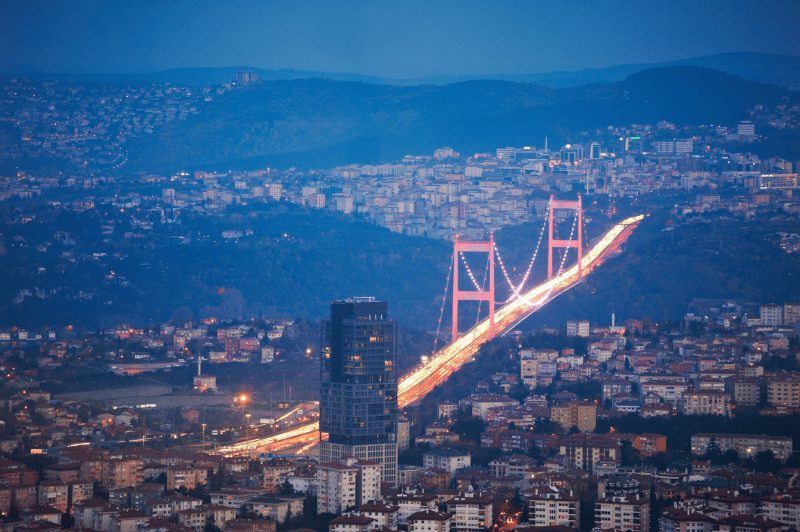50 Must-See Places in Istanbul: A Comprehensive Guide
Istanbul is a magical city that unites continents, cultures, and ages. This ancient city, which served as the capital to the greatest empires in history, whispers thousands of years of stories on every street. While you can dive into the past under the splendor of Hagia Sophia, you can also experience the present in galleries that capture the pulse of modern art. Here are 50 stops you must experience in this unique metropolis. This list includes not only historical structures but also the neighborhoods, museums, and natural beauties that constitute the soul of the city. Pack your bags and start exploring!
Hagia Sophia Grand Mosque (Ayasofya-i Kebir Cami-i Serifi)
Standing tall in the heart of Istanbul as one of history’s greatest architectural masterpieces, Hagia Sophia was built in the 6th century. This structure, which has served as a church, mosque, and museum over the centuries, fascinates visitors with its colossal dome and magnificent mosaics. As one of the most important works of world heritage in terms of religion and architecture, this structure presents the traces of two different civilizations together. When you visit here, you will witness the transformations the building has undergone firsthand.
Blue Mosque (Sultanahmet Camii)
Built in the early 17th century by the architect Sedefkar Mehmed Aga, the Blue Mosque is known as such due to its six minarets and over 20,000 Iznik tiles adorning its interior. These tiles lend a unique blue hue and elegance to the mosque’s inner space. Representing the zenith of classical Turkish architecture, this masterpiece showcases the power and aesthetic understanding of the Ottoman Empire. Don’t forget to experience the tranquil atmosphere of its courtyard during your visit.
Topkapi Palace (Topkapi Sarayi)
Serving as the administrative center and primary residence of the Ottoman sultans for nearly 400 years, Topkapi Palace is situated in a location that offers spectacular views of the Istanbul Strait and the Sea of Marmara. The Palace’s Harem section, the treasury displaying sacred relics, and the magnificent kitchens offer unique insights into imperial life. In every courtyard of the palace, you can discover a different period of historical wealth.
Basilica Cistern (Yerebatan Sarnici)
Commissioned by the Byzantine Emperor Justinian I in 532 AD, the Basilica Cistern is also referred to as the “Sunken Palace.” Its 336 marble columns, dim lighting, and water reflections create a mystical atmosphere. The most captivating details are the inverted and sideways Medusa heads located in the northwest corner. Be sure to add this spot to your list for a cool and mysterious experience straight from the depths of history.
Galata Tower (Galata Kulesi)
Built by the Genoese in the 14th century, the Galata Tower is one of the city’s most iconic structures and an indispensable part of the Beyoglu skyline. Throughout history, it has been used as a watchtower, a dungeon, and a fire tower. Today, it is a popular viewing terrace offering a 360-degree panoramic view of Istanbul. By climbing the tower, you can photograph the breathtaking views of the Golden Horn, the Bosphorus, and the historical peninsula.
Dolmabahce Palace (Dolmabahce Sarayi)
Located on the European side of the Bosphorus, Dolmabahce Palace was built in the 19th century under the influence of Western architecture, making it one of the last Ottoman palaces. This palace, which blends traditional Ottoman architecture with Baroque, Rococo, and Neoclassical styles, is famous for its luxurious decoration, crystal chandeliers, and Room 71, where Ataturk passed away. You can witness its splendor by touring the Selamlik and Harem sections.
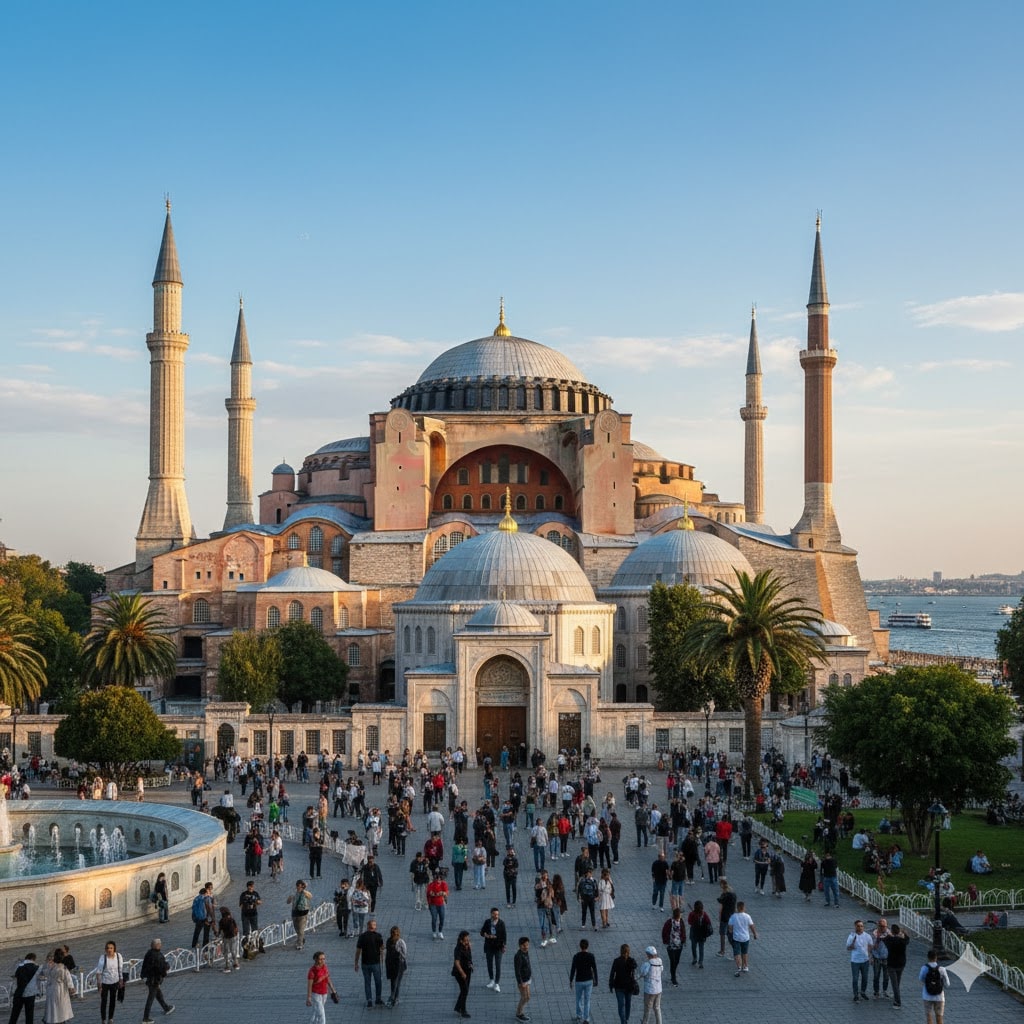
Maiden’s Tower (Kiz Kulesi)
Rising gracefully on a small island off the coast of Uskudar in the middle of the Bosphorus, the Maiden’s Tower is a romantic symbol steeped in legends. Dating back to 410 BC, the tower has served various purposes such as a lighthouse, a customs station, and a quarantine spot. Recently reopened to visitors after restoration, the tower remains the pearl of the Bosphorus, admired for its view and mystical stories.
Grand Bazaar (Kapalicarsi)
Dating back to the 15th century, this colossal market is one of the oldest and largest covered bazaars in the world. With more than 60 streets and over 4,000 shops, it has a labyrinthine structure. Here you can find countless products such as carpets, jewelry, leather goods, and traditional handicrafts. You must visit it not only for shopping but also to experience the historical texture and bustling atmosphere.
Spice Bazaar (Misir Carsisi)
Built in the 17th century to fund the nearby New Mosque (Yeni Camii), the Spice Bazaar is a vibrant market primarily selling spices, Turkish delight, dried fruits, and medicinal herbs. Stepping into the magical world of colors and scents in this bazaar, you can explore authentic Turkish delicacies and traditional souvenirs. Located in Eminonu, the bazaar also stands out due to its proximity to the Golden Horn.
Suleymaniye Mosque (Suleymaniye Camii)
Considered the masterpiece of his apprenticeship by Architect Sinan, the Suleymaniye Mosque is one of the most elegant examples of 16th-century Ottoman architecture. Located on one of Istanbul’s seven hills, the mosque boasts a magnificent view overlooking the Golden Horn and the Bosphorus. The mosque complex also includes structures like madrasahs, a Turkish bath, and a library. Watching the sunset from its courtyard offers visitors unforgettable moments.
Rumeli Fortress (Rumeli Hisari)
Built by Sultan Mehmed the Conqueror in the 15th century before the conquest of Constantinople, the fortress was intended to protect the Bosphorus against attacks from the north. Located at the narrowest point of the Bosphorus, opposite the Anatolian Fortress (Anadolu Hisari), this magnificent castle is notable for its three large towers and powerful ramparts. Today, the fortress can be visited as an open-air museum and hosts various cultural events, especially in the summer.
Chora Church (Kariye Camii)
Originally a Byzantine church, Kariye is famous for its breathtaking mosaics and frescoes. These artworks vividly depict important scenes from Christian history and saints in vibrant colors. Located in Fatih, the structure houses some of the finest examples of late Byzantine art and is one of Istanbul’s less-known but essential cultural heritage sites.
Obelisk of Theodosius (Dikilitas)
This ancient Egyptian obelisk, located in Sultanahmet Square (Hippodrome), was originally built in the 15th century BC for Pharaoh Thutmose III. It was brought from Egypt to Istanbul in the 4th century AD by the Roman Emperor Theodosius. The Roman-era reliefs on its base depict chariot races in the hippodrome and imperial life. This monument standing in the center of the historical square symbolizes the city’s multilayered history.
Istanbul Archaeology Museums (Istanbul Arkeoloji Muzeleri)
Located right next to Gulhane Park, the Istanbul Archaeology Museums consist of three main sections (Archaeology Museum, Museum of Ancient Orient, Tiled Kiosk Museum). The museum is home to world-famous artifacts such as the Sarcophagus of Alexander and invaluable collections spanning thousands of years from Anatolian, Mesopotamian, and Egyptian civilizations. It is a rich cultural stop where anyone interested in history can spend hours.
Istanbul Modern (Istanbul Modern)
As Turkey’s first modern and contemporary art museum, Istanbul Modern serves visitors in its new building in Karakoy, offering a Bosphorus view. The museum hosts permanent and temporary collections showcasing the development of Turkish art from the 20th century to the present day. It is a great place to explore modern and contemporary art pieces, photo galleries, and its cinema hall.
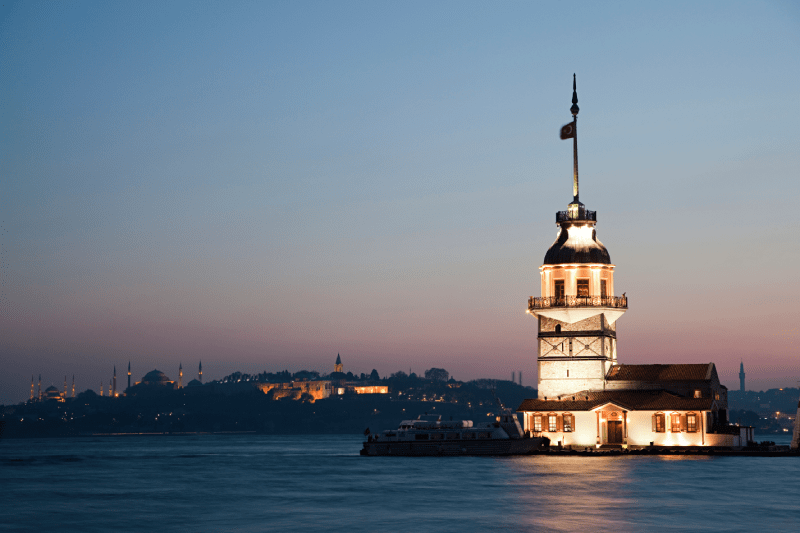
Pera Museum (Pera Muzesi)
Located in Beyoglu, the Pera Museum was founded by the Suna and Inan Kirac Foundation. The museum’s most famous collection is the “Orientalist Painting Collection,” which includes Osman Hamdi Bey’s painting, “The Tortoise Trainer.” The Anatolian Weights and Measures Collection and the Kutahya Tiles and Ceramics Collection are also worth seeing. It stands out with its variety of exhibitions and its historic building.
Sakip Sabanci Museum (Sakip Sabanci Muzesi)
Situated within the Emirgan Grove with a Bosphorus view, this museum houses a rich collection of calligraphy and painting. Operating in the historic Atli Kosk (Equestrian Pavilion), the museum is known for hosting internationally acclaimed temporary exhibitions. The museum’s garden and view make it an ideal spot to combine a cultural trip with a peaceful break.
Rahmi Koc Museum (Rahmi Koc Muzesi)
Located on the shores of the Golden Horn, this industrial heritage museum focuses on the history of transportation, communication, and industry. It exhibits a wide range of mechanical artifacts such as full-sized submarines, planes, classic cars, trams, and steam engines. It is an entertaining and educational destination, especially for those interested in the history of technology and engineering.
Museum of Turkish and Islamic Arts (Turk ve Islam Eserleri Muzesi)
Located in the historic building of the Ibrahim Pasha Palace in Sultanahmet Square, this museum boasts a rich collection of artifacts from different periods of the Islamic world. The museum is particularly home to one of the world’s richest carpet collections, handwritten Qurans, and various Islamic art pieces. It captivates visitors with its unique architecture and historical significance.
Museum of Innocence (Masumiyet Muzesi)
Established by writer Orhan Pamuk and inspired by his novel of the same name, this museum narrates the life of Istanbul in the 1970s and 80s and the story of the novel’s fictional characters through objects. Located in Cukurcuma, the museum exhibits small details from daily life and traces of love, offering an unconventional museum experience.
Panorama 1453 History Museum (Panoroma 1453 Tarih Muzesi)
Located close to the grounds where the conquest of Istanbul took place, this museum offers visitors a 3-dimensional panoramic experience of the Conquest. The visual and auditory spectacle spread across a massive dome makes one feel as if they are reliving that moment. This modern museum is an impressive stop, especially for history enthusiasts and those interested in visual arts.
Great Palace Mosaic Museum (Buyuk Saray Mozaikleri Muzesi)
This small museum, located inside the Arasta Bazaar in Sultanahmet, preserves the mosaics that were part of the Byzantine Empire’s Great Palace complex. These floor mosaics, dating back to the 6th century AD, feature detailed scenes from daily life, hunting, and mythological figures. The vibrancy and richness of detail in the mosaics showcase the mastery of Byzantine art.
Naval Museum (Deniz Muzesi)
Located in Besiktas, this museum is Turkey’s largest military naval museum and houses important artifacts from the history of Turkish seafaring, from the Ottoman Empire to the present day. It exhibits historical galleons, warship models, navigation instruments, and invaluable marine-related objects. The historical sultan’s barges, in particular, are among the museum’s most striking pieces.
Fener Greek Orthodox Patriarchate (Fener Rum Ortodoks Patrikhanesi)
Located on the shores of the Golden Horn in the Fener district, this patriarchate is the spiritual center of the world’s Orthodox Christians. The Hagios Georgios Church within the Patriarchate stands out with its Byzantine-era icons and religious rituals. This religious center, combined with the historical atmosphere of Fener and Balat, highlights the city’s cultural and religious diversity.
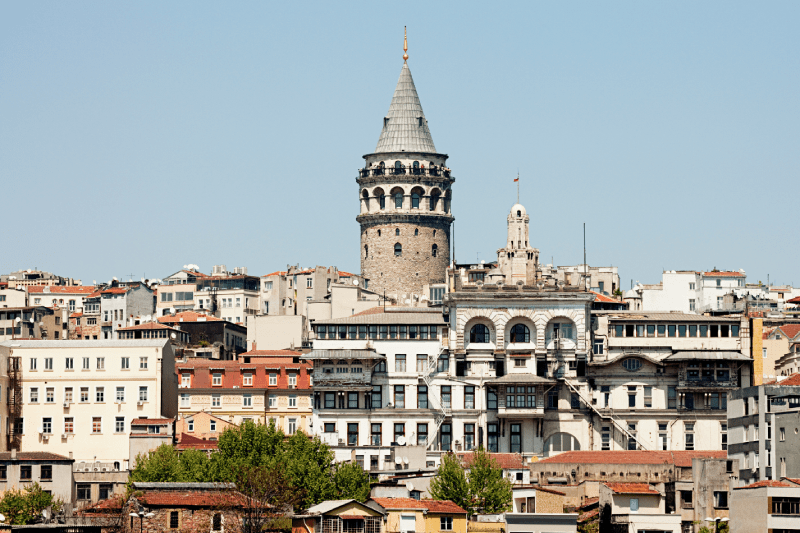
SantralIstanbul (Santral Istanbul)
Created by restoring the former Silahtaraga Power Plant and converting it into a modern art and culture center. This complex, located north of the Golden Horn, houses the Energy Museum, contemporary art galleries, and educational areas. It is a popular destination, especially for young people and those looking to attend art events.
SALT Galata (SALT Galata)
Located near the Galata Bridge in the historical building of the Ottoman Bank, SALT Galata is an innovative cultural institution operating in research, exhibition, and publishing. It contains a library, archive, and exhibition halls. This center, where historical architecture meets modern art, also impresses with its structure.
Istanbul Toy Museum (Istanbul Oyuncak Muzesi)
Founded in Goztepe by the poet/writer Sunay Akin, this museum is filled with thousands of toys collected from all over the world. Historical toys dating from the 1700s to the present day create an atmosphere of a fairy-tale world. It is a special place that offers a nostalgic journey where both children and adults can have a pleasant time.
Ataturk Museum (Ataturk Muzesi)
Located in Sisli, this building, where Mustafa Kemal Ataturk lived between 1918 and 1919, has been serving as a museum since 1928. The museum displays Ataturk’s personal belongings, clothing, photographs from that period, and military documents. Visiting this important house, where the plans for the War of Independence were made, means touching history itself.
Taksim Square (Taksim Meydani)
Taksim Square, the center of Istanbul’s modern face and cultural vitality, is the starting point of Istiklal Avenue. Adorned with the Republic Monument, the square hosts various social and cultural events throughout the year. It is an ideal meeting point for feeling the city’s dynamism and taking photographs.
Istiklal Avenue (Istiklal Caddesi)
Stretching from Taksim to Galata, this historic avenue is Istanbul’s most famous and busiest pedestrian street. It features shops, cinemas, cafes, historic arcades, and consulate buildings. This avenue, where the nostalgic tram slowly passes, reveals the vibrancy of the city’s commercial and social life.
Karakoy (Karakoy)
Karakoy, which has grown in popularity in recent years, is an energetic district where historic buildings are blended with modern cafes, art galleries, and boutique shops. The waterfront area and its surrounding streets particularly attract young people and tourists. You can enjoy a delicious fish sandwich under the Galata Bridge and visit contemporary art galleries.
Balat (Balat)
Located on the shores of the Golden Horn, Balat, a UNESCO World Heritage site, is a Fener-Greek neighborhood famous for its colorful bay-windowed houses, historic churches, and synagogues. As you wander through its narrow streets, you feel as if you are in an open-air museum. The authentic atmosphere of the district offers a fascinating experience for photographers and those seeking nostalgia.
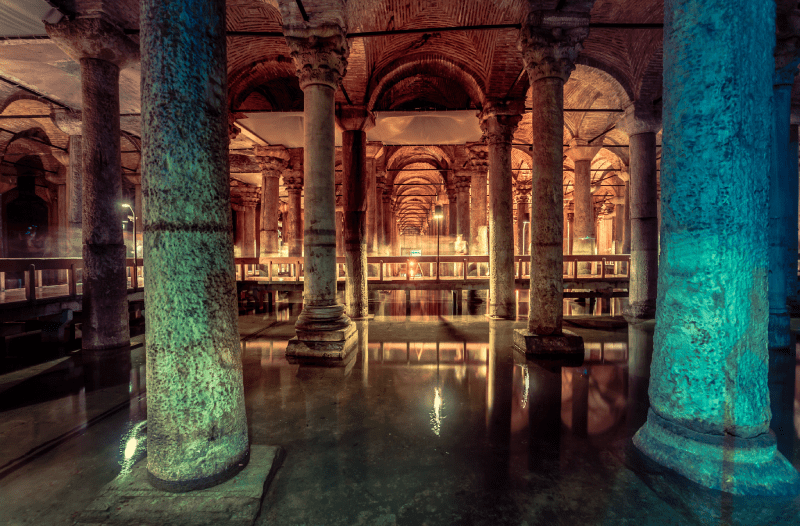
Moda (Kadikoy)
Moda, one of the most popular districts on the Asian side of Istanbul, is famous for its chic cafes, boutiques, and lush coastal park. Watching the sunset from the Moda Pier and taking long walks along the coast is a great pleasure. This district, which stands out with its peaceful atmosphere and quality lifestyle, is ideal for relaxing and witnessing the local life.
Cicek Pasaji (Cicek Pasaji)
Located on Istiklal Avenue, this historic arcade was built in the 19th century and initially housed flower vendors. Today, it is a popular venue, predominantly featuring taverns (meyhane) and restaurants, while preserving its historical atmosphere. The arcade’s architecture and vibrant social environment reflect the cultural life of Beyoglu, especially in the evenings.
Ortakoy Mosque and Square (Ortakoy Camii ve Meydani)
The Ortakoy Mosque (Buyuk Mecidiye Camii), rising elegantly on the water’s edge right beneath the Bosphorus Bridge, is one of the finest examples of Baroque architecture. Its square is famous for street vendors, kumpir (baked potato) sellers, and its Bosphorus view. Attracting both locals and tourists on weekends, it offers a fantastic backdrop for photography.
Eminonu (Eminonu)
Located at the intersection of the Golden Horn and the Bosphorus, Eminonu is one of Istanbul’s busiest historical centers, where the heart of commerce beats. The New Mosque, the Spice Bazaar, and Sirkeci Terminal are located in this area. From the jetties where ferry services depart, you can cross to the Princes’ Islands or Uskudar, and watch the bustling port life while eating a fish sandwich by the sea.
Bebek Coast (Bebek Sahili)
Bebek, one of the most stylish and prestigious districts on the Bosphorus, is famous for its luxurious cafes, restaurants, and walking paths. Strolls along the coast and relaxing in Bebek Park are wonderful ways to escape the city’s chaos. The district is also notable for its Bosphorus mansions (yali) and boutiques that reflect a modern lifestyle.
Kuzguncuk (Kuzguncuk)
Kuzguncuk, located on the Asian side and connected to Uskudar, is known for its historic houses, peaceful atmosphere, and the coexistence of different religious places of worship. The district’s small, charming cafes and streets that have preserved their unique structure have made it a popular location for TV series and film shoots. It is ideal for those seeking both tranquility and historical texture.
Pierre Loti Hill (Pierre Loti Tepesi)
Located on the hills of Eyup, this vantage point offers one of the most beautiful views of the Golden Horn. You can reach the hill by cable car and enjoy the view at the historic café named after the famous French writer Pierre Loti. It is a great spot to view the historical peninsula of Istanbul, the curves of the Golden Horn, and the silhouettes of old districts from a bird’s-eye perspective.
Belgrade Forest (Belgrad Ormani)
A massive green area located north of the city, the Belgrade Forest is a popular escape for Istanbul residents due to its historic dams dating back to the reign of Mahmud I and its natural beauty. Ideal for walking, jogging, and picnicking, this forest is an important natural heritage area for those seeking fresh air away from the city’s crowds.
Emirgan Grove (Emirgan Korusu)
The Emirgan Grove, especially adorned with colorful tulips during the annual Tulip Festival, is a large historical park situated on the Bosphorus shore. The historic pavilions (Yellow, Pink, and White Pavilions) within the grove serve as cafeterias and offer magnificent Bosphorus views. It is one of the most beautiful places for photography during the spring months.
Gulhane Park (Gulhane Parki)
Gulhane Park, once used as the outer garden of Topkapi Palace, is now one of the city’s most beautiful parks. It features walking paths, pools, and statues reflecting old Istanbul. The park, overlooking the Sea of Marmara at Sarayburnu, is an ideal resting spot for taking a break and getting some Bosphorus air while touring the historical peninsula.
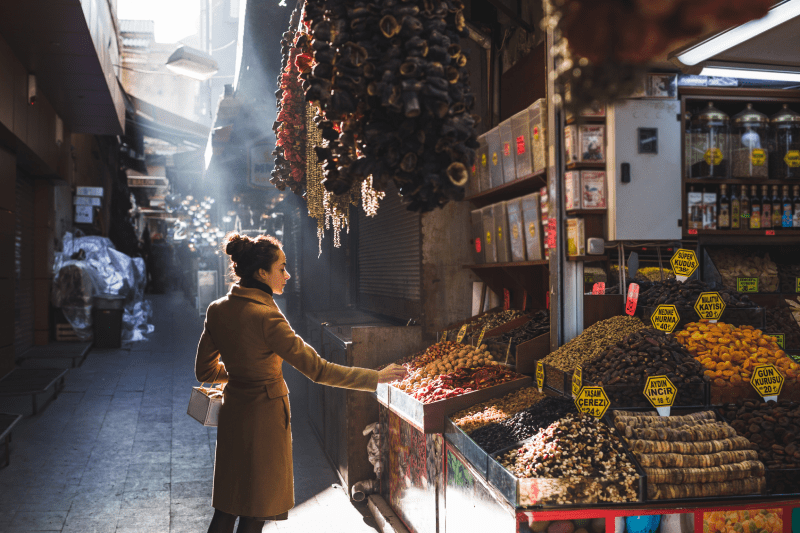
Camlica Hill (Camlica Tepesi)
Camlica Hill, one of the highest hills on the Asian side of Istanbul, offers a magnificent panoramic view of both the European and Asian sides. It has become a popular attraction with the newly built grand mosque and observation decks. Here, you have the chance to see both sides of Istanbul and the Bosphorus simultaneously.
Yildiz Park (Yildiz Parki)
Located between Besiktas and Ortakoy, Yildiz Park was used as the outer garden of the palace during the late Ottoman period. Filled with dense vegetation and pavilions belonging to the Yildiz Palace, this park has a tranquil atmosphere despite being in the city center. It is a preferred area for Istanbul residents, especially for morning walks and picnics.
Princes’ Islands (Adalar – Buyukada)
This group of islands located south of Istanbul is a perfect escape from the city’s noise. Especially Buyukada, the largest of the islands, features historic mansions, natural beauty, and opportunities for cycling. The restricted use of motorized vehicles on the islands makes it a peaceful sanctuary.
Vialand Theme Park (Vialand Tema Parki)
Vialand, located in Eyup, is Turkey’s first integrated theme park, shopping center, and show center. The amusement park section, with its adrenaline-fueled roller coasters, water rides, and various entertainment units, attracts families with children and young people in particular. It is an ideal destination for spending a fun and active day.
Beylerbeyi Palace (Beylerbeyi Sarayi)
Located in the Beylerbeyi district on the Asian side, this elegant palace was built by Sultan Abdulaziz in the 19th century to serve as a summer residence and guesthouse for foreign dignitaries. The palace stands out with its waterside location, marble craftsmanship, and interior decoration adorned with nautical motifs. You can enjoy a pleasant time in the palace’s peaceful garden.
Miniaturk (Miniaturk)
Miniaturk, located on the shores of the Golden Horn, exhibits 1/25 scale miniature models of hundreds of important structures selected from Turkey and the Ottoman geography. It offers the opportunity to see many artifacts together, from Hagia Sophia and the Selimiye Mosque to the ancient city of Ephesus and Mount Nemrut. It’s a wonderful experience for those who want to tour all of Turkey in a few hours.
Camlica Tower (Camlica Kulesi)
The Camlica Tower, which opened in 2021, is the tallest structure in Istanbul and offers a modern observation deck. With its 360-degree panoramic view, it gives visitors the opportunity to view the entire city, the Bosphorus, and its surroundings from above. The tower, notable for its restaurants and observation decks, is particularly appealing to those interested in contemporary architecture.
Ataturk Airport Nation’s Garden (Ataturk Havalimani Millet Bahcesi)
This massive nation’s garden, built on the former Ataturk Airport site, is one of the city’s largest green space projects. With walking and cycling trails, vast picnic areas, and various social facilities, it creates a huge breathing space within the city. It is an ideal place for families to spend time immersed in nature.
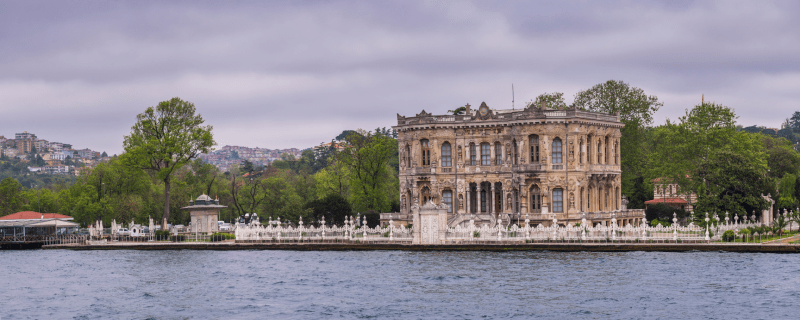
Turkiye Is Bankasi Museum
Located in Eminonu, this museum sheds light on the banking and economic history of Turkey. Operating in the former bank building, the museum is filled with historic safe deposit boxes, banking tools, and documents dating back to the early years of the Republic. The museum is a must-see while touring the area, due to its free entry and historical atmosphere.
Istanbul Museum of Painting and Sculpture
This museum, located within Mimar Sinan Fine Arts University, is Turkey’s first painting and sculpture museum. It houses a vast collection of Turkish painting, stretching from the Tanzimat period to the present day. The museum, which contains the most important works of modern and traditional Turkish art, is an essential stop for art lovers.
Balat and Fener’s Colorful Stairs
As you walk through the narrow, historic streets of Balat and Fener, the stairs and bay-windowed houses painted in vibrant colors that you will encounter offer Instagrammable views unique to these districts. These steps form a wonderful backdrop for taking photos, soaking in the authentic atmosphere of the area, and witnessing moments where art spills onto the street. They are special corners that reflect the cultural diversity of these districts.
Kadikoy Bull Statue
This bronze bull statue, one of Kadikoy’s symbols, was actually made in France in the 19th century and settled in Kadikoy after traveling through various countries. This statue in the middle of the square is primarily used as a meeting point on the Asian Side and is the first stop for entering the lively streets of Kadikoy. It is a vibrant spot that reflects the spirit of Kadikoy.
Cengelkoy Cinaralti
Located on the Cengelkoy coast on the Asian side, this tea garden under a historic plane tree is one of the most pleasant places to relax while overlooking the Bosphorus. You can experience the tranquility of the Bosphorus accompanied by a traditional Turkish breakfast and a freshly brewed cup of tea. Sitting here and watching the passing ferries is one of the peaceful moments Istanbul offers.
Beyoglu Tunel
Opened in 1875, the Tunel is the world’s second-oldest underground railway system and one of Istanbul’s historic means of public transportation. This short line connecting Galata and Beyoglu offers a nostalgic travel experience. The squares at the entrance and exit of the Tunel are the starting points for exploring the historical texture of the Galata area.
Further Exploration of Istanbul
Even this concise list of over 50 places to visit in Istanbul demonstrates what a rich history and culture the city possesses, doesn’t it? Everything is combined in this city: from ancient Byzantine ruins to modern art centers, from the unique views of the Bosphorus to the mystical scents of historical bazaars.
I hope this comprehensive guide inspires you to plan your trip! With so many options, we can discuss which region you would like to focus on or which historical structure’s story you would like to delve into more deeply from the list.
